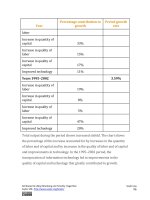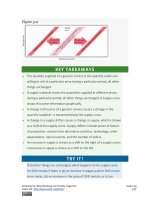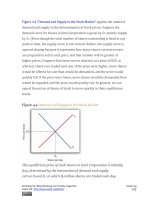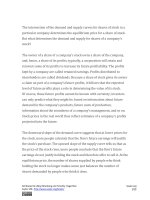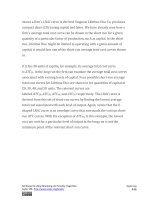Authors libby rittenberg 871
Bạn đang xem bản rút gọn của tài liệu. Xem và tải ngay bản đầy đủ của tài liệu tại đây (415.93 KB, 1 trang )
dangerous will presumably stop using it. By preventing the purchase in the
first place, the government may save the consumer the cost of learning
that lesson.
One problem in assessing the benefits of consumer protection is that the
laws themselves may induce behavioral changes that work for or against
the intent of the legislation. For example, requirements for childproof
medicine containers appear to have made people more careless with
medicines. Requirements that mattresses be flame-resistant may make
people more careless about smoking in bed. In some cases, then, the
behavioral changes attributed to consumer protection laws may actually
worsen the problem the laws seek to correct.
An early study on the impact of seat belts on driving behavior indicated
that drivers drove more recklessly when using seat belts, presumably
because the seat belts made them feel more secure.[1] A recent study,
however, found that this was not the case and suggests that use of seat
belts may make drivers more safety-conscious. [2]
In any event, these “unintended” behavioral changes can certainly affect
the results achieved by these laws.
The Cost of Consumer Protection
Regulation aimed at protecting consumers can benefit them, but it can also
impose costs. It adds to the cost of producing goods and services and thus
boosts prices. It also restricts the freedom of choice of individuals, some of
whom are willing to take more risks than others.
Attributed to Libby Rittenberg and Timothy Tregarthen
Saylor URL: />
Saylor.org
871
